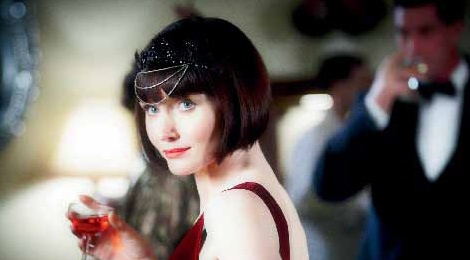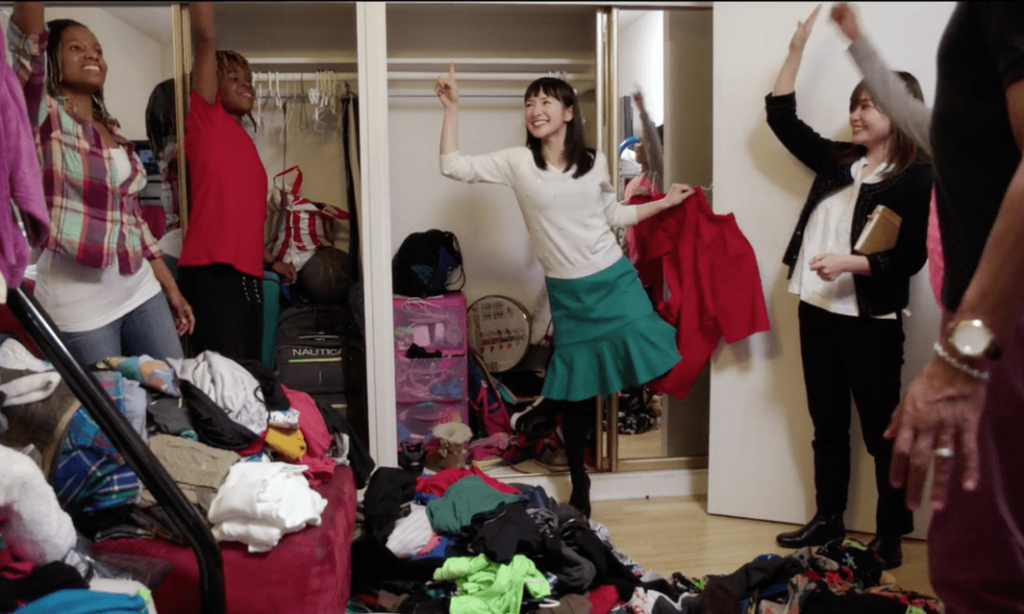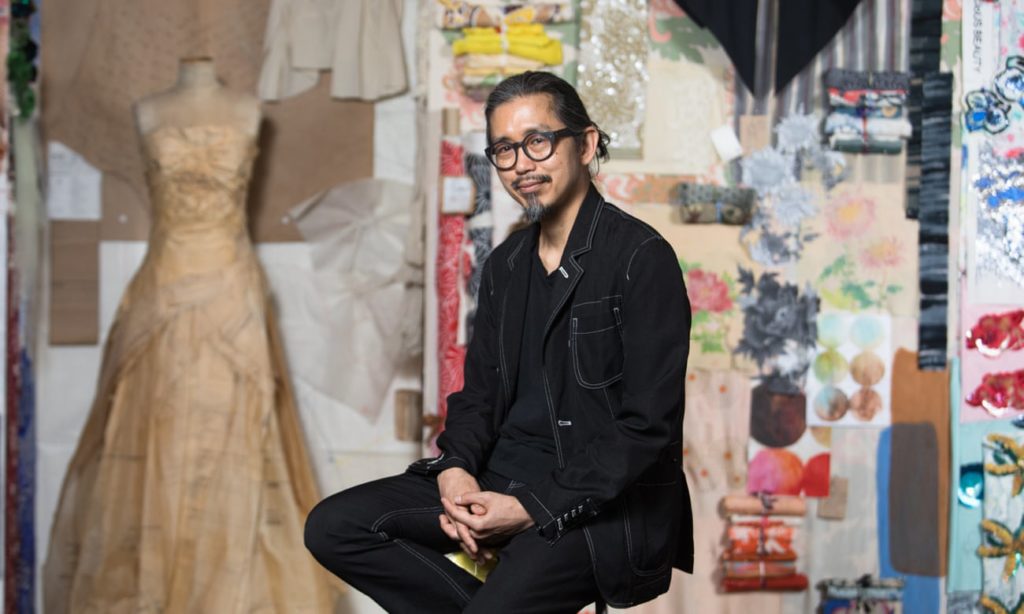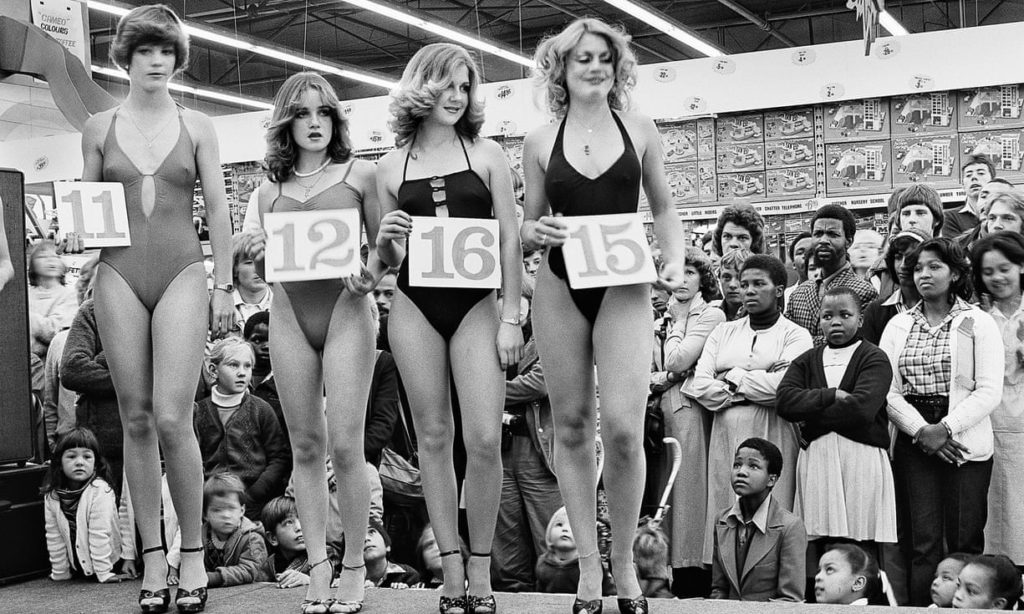Miss Phryne Fisher is a heroine for the modern age
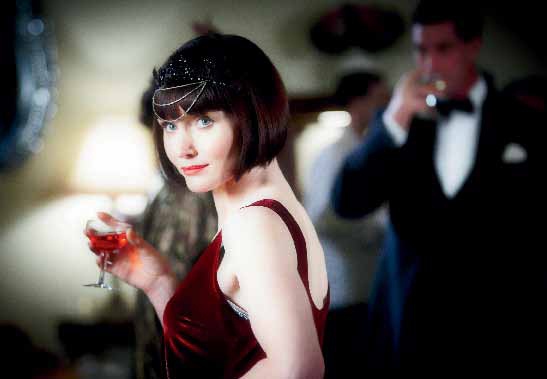
The gold, pearl-handled gun appears first, held firmly in a long pale hand. From behind a sandstone wall, our heroine swings into view. Her gold chandelier earrings sway under her gleaming black bob and her white silk coat, thrown over a black and white embellished top and black pants, wards off the chill of the dusty, dim basement.
Outside, Occupy Melbourne protesters lounge in the sunny Treasury Gardens, but inside the Old Treasury Building, it’s 1928 and Miss Phryne Fisher is on the trail of her nemesis.
“Phryne is like the first feminist,
and the 1920s
is a great time for women”
The supremely elegant Miss Fisher is the lady detective star of the popular Phryne Fisher murder mysteries, created by author Kerry Greenwood. Smart, sassy and a woman of independent means, Miss Fisher sashays through the racy, risqué world of 1920s Melbourne, solving murders, charming paramours and startling the neighbours with barely a ruffle of that signature bob. And this month she comes to glorious life in the ABC television drama series Miss Fisher’s Murder Mysteries.
Producers Fiona Eagger and Deb Cox, who produced East of Everything together, wanted to do a crime series for the ABC but aspired to create the kind of show they’d enjoy, one with an adventurous female lead. “And Phryne came along,” says Eagger. “You’ve got the crime that creates the narrative momentum, but within Phryne you’ve got so many different things to explore. In [the episode] Cocaine Blues it’s a rollicking adventure, but you touch on illegal abortion [and] the use of cocaine at the time. You can bundle in lots of more meaty stuff.”
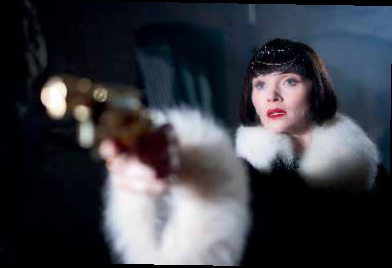
Given the recent success of dramas such as Downton Abbey and Paper Giants, the fact that it was a period piece made it even more appealing. “[Phryne] loves her frocks and her cocktails and it’s a very glamorous world, but Phryne is like the first feminist, and the 1920s is a great time for women,” says Eagger.
As escapist as period drama can be, the series had to be relevant. “Phryne is such a firebrand, she’s a good role model for women and she’s a feminist without being at all didactic or boring,” says Cox. “Her social conscience is fantastic, her values are fantastic, so it’s a great thing to put out there. And she likes a bit of action, she’s not hung up in any way,” she laughs.
Stepping into Miss Fisher’s glacé kid boots is award-winning actress Essie Davis. For the producers, she had the polish, elegance and strength required, as well as that extra something. “A lot of actresses feel quite contemporary. She felt of the period but she had a cheekiness that came through,” says Eagger.
Like Miss Fisher, there is something worldly about Hobart-born Davis, who has lived and worked steadily around the world throughout her career. Equally, there is also something enigmatic about her. Despite appearing in numerous theatre productions; films such as Girl with a Pearl Earring, the Matrix trilogy, Babe and the recent Burning Man; and television series like last year’s Cloudstreet and The Slap, Davis has somehow managed to remain relatively anonymous.
“Her social conscience is fantastic,
her values are fantastic,
so it’s a great thing to put out there.
And she likes a bit of action,
she’s not hung up in any way”
For her, playing Miss Fisher is a delight. “She is so feisty and witty and goes on great adventures. She’s brave and reckless – she’s kind of like a superhero,” she says with a laugh, blue eyes twinkling. The role has certainly beefed up her special skills resume. “A lot of it has been learning it on the spot, including tango and foxtrot lessons, how to throw a dagger and a hatchet, how to balance on a rooftop, how to hang off the back of a train, how to drive a Hispano-Suiza, how to fly an aeroplane, how to speak Mandarin and Russian,” she reels off the list. “Phryne is just brilliant at everything and so it’s about really winging it to make it look good.”
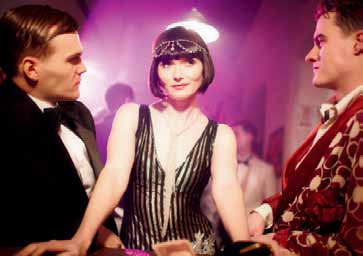
The series was filmed over six months, in and around Melbourne. Greenwood researched the history of the city meticulously for her novels, and the producers were keen to follow in her footsteps, filming at some actual locations and recreating others, such as a Turkish bathhouse and the legendary Eastern Market.
Miss Fisher’s house was built on a sound stage at the ABC’s Melbourne studios, and stepping onto the set is like time travelling. A Tiffany lamp sits on an art deco coffee table while an enamel dog arches his back on the mantelpiece in the jewel-toned living room. A silver tray full of perfume bottles, silver hairbrushes and ropes of beads sits on the dressing table in Miss Fisher’s boudoir, not far from a claw-foot bathtub (“Phryne’s thinking place,” says Cox). Art nouveau masterpieces hang on the walls and bottled fruits and preserves line up in the kitchen pantry.
The costumes have been just as carefully created, with a dedicated sewing team, including pattern makers and cutters, on staff. Although eBay and vintage shops have been plentiful sources, what couldn’t be found was recreated. “Once you go back to the 1920s, things have either deteriorated or they are too small because the women were smaller, so it means a lot of it has to be made from scratch,” says Cox. Every intricate detail has been considered. “That’s what’s lovely,” says Eagger. “The art department, wardrobe, location, make-up and hair – everyone on this gets to shine.”
Published in Vogue Australia April 2012
WHY DON’T YOU READ:
New ABC drama The Slap tackles controversy
Catherine Martin designs a new rug range for Great Gatsby
